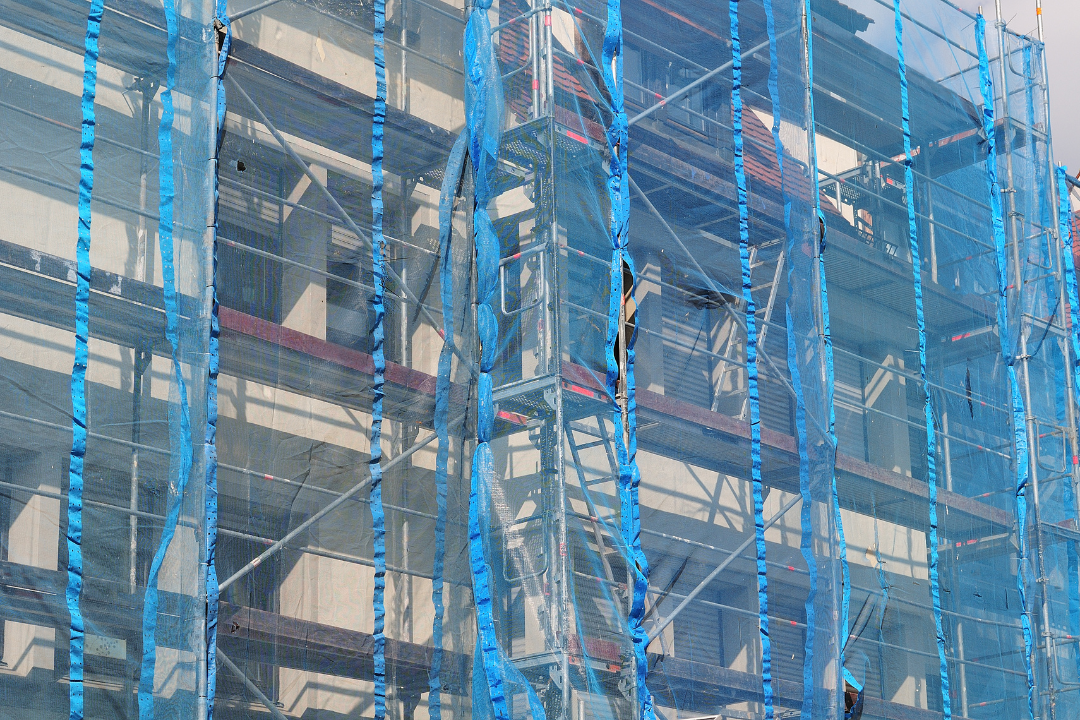Given we are the construction safety specialists, it’s little wonder Kerrect know a thing or two about the importance of
safety net protection and the benefits they bring to a worksite. In this month’s blog, we’re going to take a closer look at all things safety nets and how they can also boost the morale and confidence of your workforce, which is a boon for everyone, is it not?
Safety should always be a priority on any construction site. Regardless of the height level, any fall can result in serious injuries. Furthermore, the absence of safety measures can make your team feel unsafe and uncomfortable. Fortunately, safety nets, as discussed in this article, provide key benefits and enhancements to your worksite.
Why construction safety nets are essential
Safety nets are support nets erected on the interior and exterior of buildings under construction. They serve as collective fall arrest devices beneath the working level of wide working areas. Safety nets are essential in slowing down or dissipating the impact energy of falling people or debris on a construction site, preventing accidents and most importantly, saving lives. They are a vital level of protection and by prioritising them, you are ultimately protecting your workers, as well as safeguarding your reputation and commitment to safety within the construction industry.
The role of safety nets in high-risk environments
Safety nets are designed to deflect and absorb the energy of a fall, so they reduce the likelihood of a person being injured. The most prominent benefit of safety nets is to protect workers from falls, preventing accidents and ultimately, saving lives.
The materials used in safety nets, typically high-tensile polypropylene or nylon, are chosen for their durability and ability to withstand heavy loads and harsh weather conditions. This ensures that the safety nets are not only strong, but also long-lasting, making them a cost-effective safety measure on construction sites.
Assessing risks: when are safety nets are necessary
Safety netting is versatile and can be used in various construction environments, including high-rise buildings, rail bridges, roofing projects and industrial environments. If the work is not possible to be carried out on the ground, then it’s essential you provide and maintain a safe system of work to provide adequate protection from falls, such as safety nets.
It’s also important to consider
fall prevention when planning to work at heights and have work procedures in place on how to install, use and maintain the fall prevention device correctly.
Another benefit of safety nets is that they don’t impede progress or require intricate installation procedures. This means they are easy to assemble, work around or take down.
When selecting the appropriate safety netting for your project, it’s important to consider several factors including the scope of the project, the environment in which it will be used and the specific safety needs of the site. Consulting with experts like our team at Kerrect, can also help you make informed decisions that protect your workers and contribute to the success of your project.
Boosting worker’s confidence with safety nets
Knowing that a strong safety net is in place allows your workers to perform their tasks with greater confidence. Additionally, if the worry of falling and injuring themselves has been removed, your workers will stay on task with greater efficiency. In turn, this enhanced productivity leads to better results and faster completion, with minimal mistakes or delays.
Although this psychological benefit is often overlooked, it’s a crucial part of keeping your construction team motivated, positive and focused. Your team is the backbone of your operation, so keeping everyone safe should always be your number one priority.
Want to know more?
At Kerrect, we offer tailored height solutions to meet the unique requirements and challenges of each project. Our team’s expertise guarantees that the safety netting we provide is not only compliant with industry standards, but is also perfectly suited to the specific demands of your construction site.
Reach out to one of our professional team today to find out more regarding working safely at great heights.

